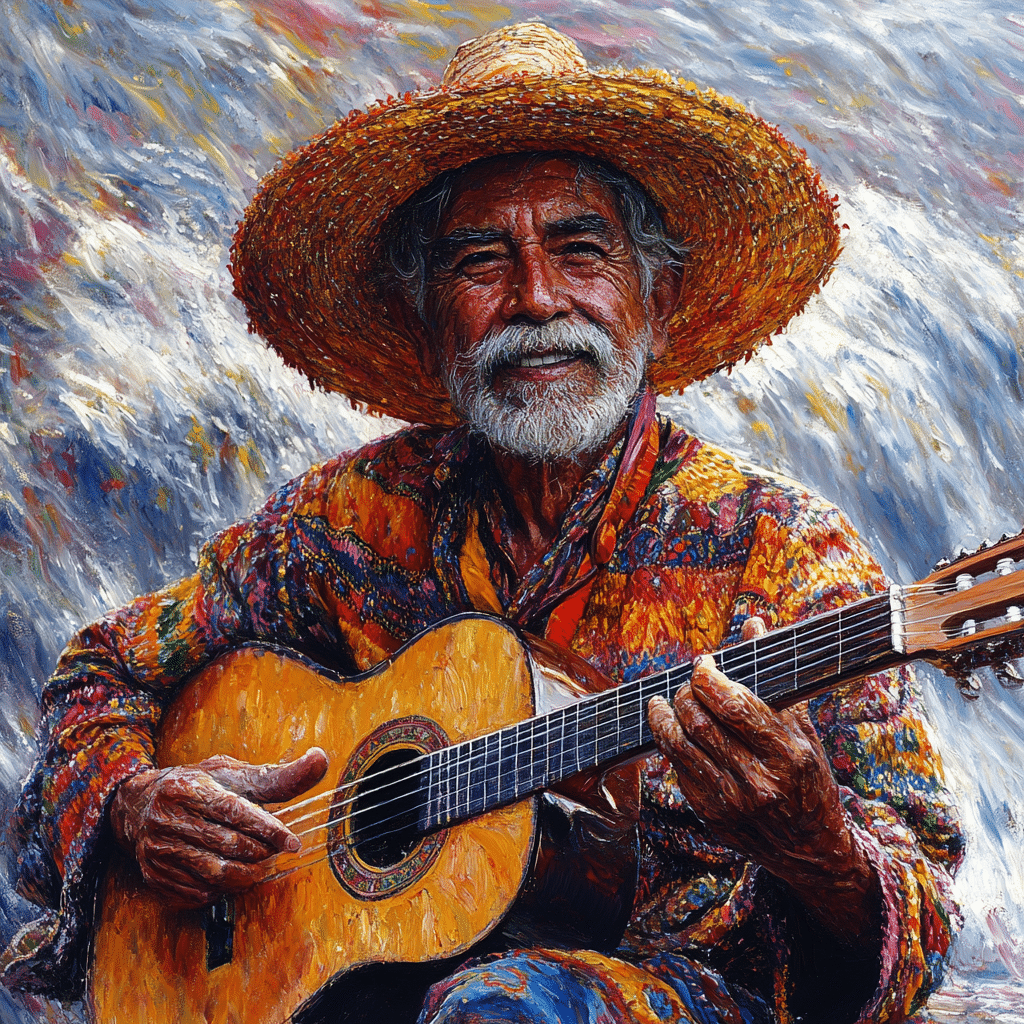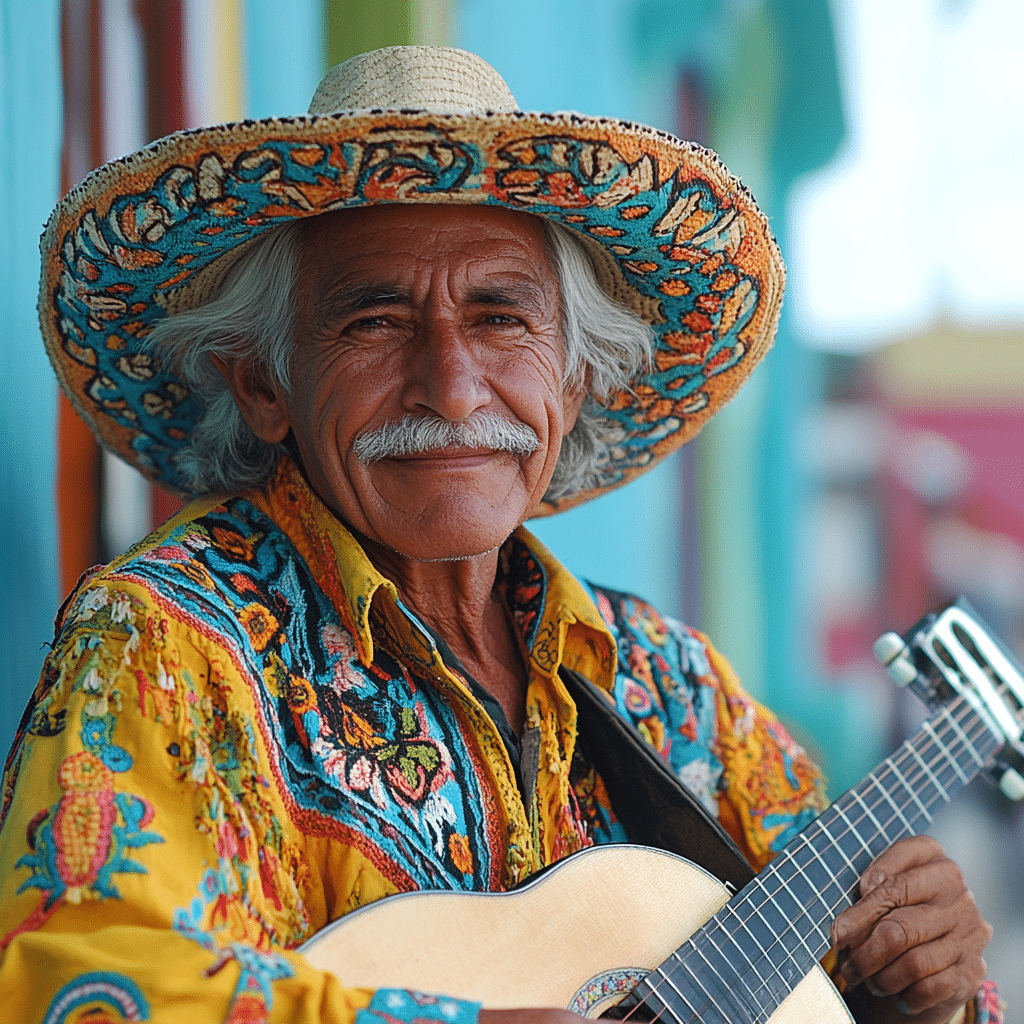Mexican music has long been a vital part of the country’s identity, serving as both a mirror reflecting its history and a canvas splashed with culture’s vibrant colors. The world of Mexican music is an intricate tapestry, woven from a variety of cultural influences—Indigenous, Spanish, African, and even contemporary elements. Each of these varied threads contributes to the deep rhythmic patterns, melodic structures, and emotional expressions found in music from across the nation. From the joyous sounds of mariachi at weddings to the soul-stirring ballads of Norteno songs, Mexican music offers a plethora of experiences that engage and excite listeners from all walks of life. In 2024, the global impact of this music continues to be felt far beyond its borders, making its mark on countries like Guyana and Venezuela, and even reaching as far as Ecuador.

The Heartbeat of Mexican Music: Styles and Influences
Delving into Mexican music reveals a vibrant history, rhythmically alive with various styles that share stories and cultural influences. Each genre encapsulates unique qualities that showcase the country’s complex heritage. Think of mariachi music, which seamlessly blends Spanish instrumentation with Indigenous melodies, or Norteno, where German influences intermingle with traditional Mexican folk elements. Together, these styles present a sonic portrait of a nation that has embraced change while honoring its roots.
Mariachi serves as perhaps the most well-known representation of Mexican music, expanding beyond local borders to enchant global audiences. It often features lively trumpet solos, strumming guitars, and soaring violins, creating a sound synonymous with joyous celebrations. In contrast, young performers push the boundaries of the genre, working to incorporate contemporary themes and popular music influences that resonate with a new generation.
Meanwhile, Norteno music, emerging from northern Mexico, intertwines various elements, including German polka rhythms and authentic Mexican melodies. This genre has not only become popular at home, but also plays a significant role in telling tales of migration along the U.S.–Mexico border. Bands like Los Tigres del Norte have elevated Norteno to international acclaim, sharing rich narratives that connect deeply with those familiar with the struggles and triumphs of immigrant communities.

Top 5 Mexican Music Styles: A Global Influence
The evolution of Mexican music has given rise to a plethora of genres, each carrying its own unique flavor. Here are five prominent styles that showcase the diversity embedded in the rich heritage of Mexican music.
1. Mariachi
Hailing from the state of Jalisco, mariachi is perhaps the most iconic representation of Mexican music. Emblazoned in traditional attire, mariachi bands spread joy at weddings and festivals. With artists like Vicente Fernández—often regarded as the “King of Mariachi”—and Alejandro Fernández, the genre has crossed international borders, captivating audiences worldwide.
2. Norteno
Norteno music boasts a sound that’s hard to resist, stemming from northern Mexico and channeling influences from German folk sounds. Bands like Los Tigres del Norte spearhead this movement, crafting tales of life along the U.S.–Mexico border that resonate deeply with listeners. Their songs capture experiences of love, hardship, and the immigrant journey.
3. Son Jarocho
Originating from Veracruz, Son Jarocho embodies the spirit of Mexican folklore. With its vibrant rhythms and instruments like the jarana guitar, it brings people together in dance and festivity. The well-known song “La Bamba” exemplifies its global reach, showcasing how Mexican music can charm audiences around the globe.
4. Banda
Banda music from Sinaloa fills the air with captivating brass sounds that evoke excitement and revelry. Notable groups like Banda El Recodo have popularized this lively genre, entertaining audiences at large events and fiestas that reflect the heart of Mexican culture.
5. Rock Mexicano
Emerging in the 1960s, Rock Mexicano represents a blend of traditional Mexican music with rock and roll. Bands like Caifanes and Maná appeal to a younger demographic, demonstrating how Mexican music can adapt and evolve by intertwining modern beats with historical roots.
The Connection to Neighboring Regions: Mexican Music Influencing Guyana and Venezuela
The ripple effects of Mexican music extend into neighboring countries such as Guyana and Venezuela, where its rhythmic structures play a significant role in shaping their musical landscapes. Here, Latin rhythms have found a home, characterized by lively percussions and infectious dance beats.
In Guyana, the vibrant sounds of Mexican music can be heard in various festive occasions, creating an atmosphere where people gather to dance and rejoice. Similarly, Venezuela has embraced these influences, integrating them into its diverse musical mix. This cultural exchange highlights the power of Mexican music to transcend borders, uniting people with its universal appeal.
Cultural Exchange: How Mexican Music Travels to Ecuador
Mexican music has also made a notable impact in Ecuador, particularly in the bustling city of Quito. Here, the sounds of mariachi and Norteno are interwoven with traditional Ecuadorian tunes, creating a blossoming musical landscape that celebrates cultural fusion.
The rise of Latin fusion genres has paved the way for collaborations among artists, allowing them to craft new sounds that resonate deeply with audiences. The cultural exchange fosters a rich musical community where tradition and innovation coexist harmoniously, further enhancing the prominence of Mexican music in Ecuador.
Celebrating Regional Sounds: Guerrero Mexico’s Impact on National Music
Regions like Guerrero, Mexico, hold a unique position within the country’s vibrant Mexican music scene. The distinct sounds of the “baile de los tlacololeros” highlight Indigenous influences, contributing significantly to California’s musical diversity.
Genres like Chilena and Son Guerrerense have emerged from Guerrero, showcasing the area’s dedication to preserving traditional sounds. Often featured in local festivals, these regional musical expressions resonate with people, adding depth to the national identity of Mexican music.
Resonating Through Time: Mexican Music’s Cultural Relevance Today
As we step into 2024, the global resonance of Mexican music has remained steadfast. Today’s artists continue to draw on traditional roots while embracing technological advances and new musical styles. The rise of social media platforms has facilitated a broader dissemination of Mexican music, allowing voices from Guerrero and beyond to reach expansive audiences.
This cross-cultural exchange enriches the musical tapestry of Latin America. Artists are not just preserving historical influences but also innovating, ensuring that future generations can appreciate and celebrate the distinctive rhythms and legacies of Mexican music.
In conclusion, Mexican music serves as a vital thread in the fabric of cultural heritage. As it continues to evolve and spread its vibrant rhythm across the globe, one thing remains clear: the heart of Mexican music will forever beat strong, echoing the stories and passions of a nation woven together by sound.
Mexican Music: A Treasure Trove of Rhythm and Heritage
The Essence of Mexican Music
Did you know that Mexican music pulls from a rich tapestry of influences? From native indigenous sounds to Spanish colonial impacts, this genre embodies a blend of cultural rhythms. For example, the traditional folk music, known as son, weaves together guitar melodies and vibrant vocals, creating a lively atmosphere at celebrations. This fusion can also be seen at huge events like the Grammys, where artists from various backgrounds showcase their talent. If you’re curious, check out what channel the Grammys are on to catch these mesmerizing performances live!
Rhythmic Trivia to Tape to Your Fridge
Here’s a fun tidbit: Mariachi bands, with their striking outfits and lively tunes, originated in the state of Jalisco in the 19th century. These bands are usually made up of violins, trumpets, and guitars, and they play an essential role in ceremonies and parties across Mexico. It’s fascinating how a music genre can become so intertwined with a country’s celebrations, just like the Romania national football team evokes national pride during tournaments. Speaking of pride, artists like Louis Osbourne continue to represent cultural roots while innovating their sound, bridging gaps between tradition and contemporary music.
Musical Traditions and Surprising Facts
Let’s dive deeper into the importance of rhythm! The ranchera genre often reflects themes of love and life struggles, connecting deeply with people’s emotions. You might be surprised to find out that in these songs, the storytelling aspect often rivals that of many classic movies. For instance, actors like Peter Strauss have captured audiences through their stunning performances, much like a powerful ranchera might grab your heart. This connection to storytelling is what truly makes Mexican music memorable and enduring. And guess what? The term Comprende often appears in these songs, inviting listeners to feel included in the narrative experience.
A Living History
Moreover, the legacy of percussion cannot be overstated. Various instruments like the marimba and bongos add unique layers to the music and reflect the diverse cultural exchanges throughout history. The art of sharing these rhythms reminds folks to remain in tune with their heritage. For those who have ever experienced feeling lightheaded, akin to greening out, while dancing to a catchy tune, you understand just how intoxicating music can be! In the spotlight of Mexican music, legends like Demarco Murray have transformed what rhythmic excellence means, capturing the essence of each beat with precision.
So, as we groove along with these beats, remember that Mexican music is more than just tunes; it’s a celebration of life, culture, and countless stories waiting to be shared.




